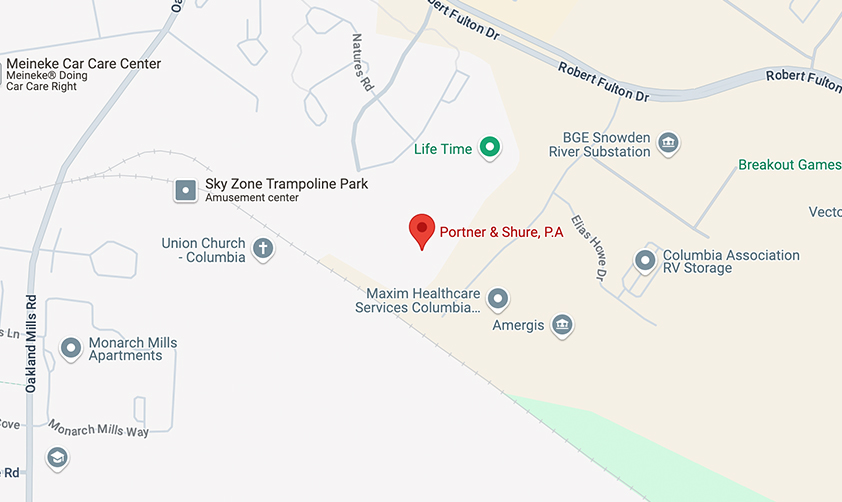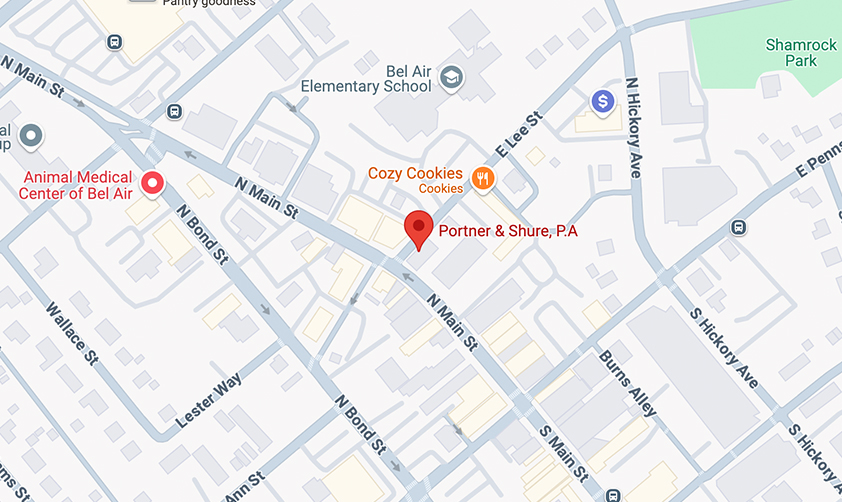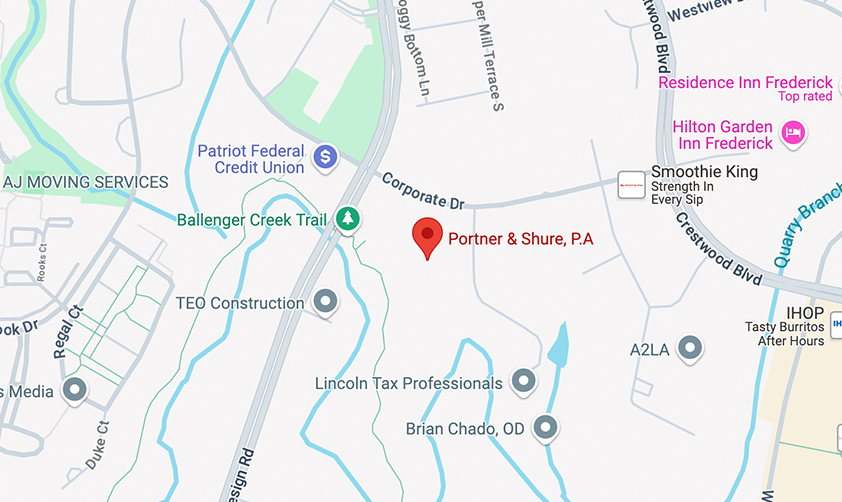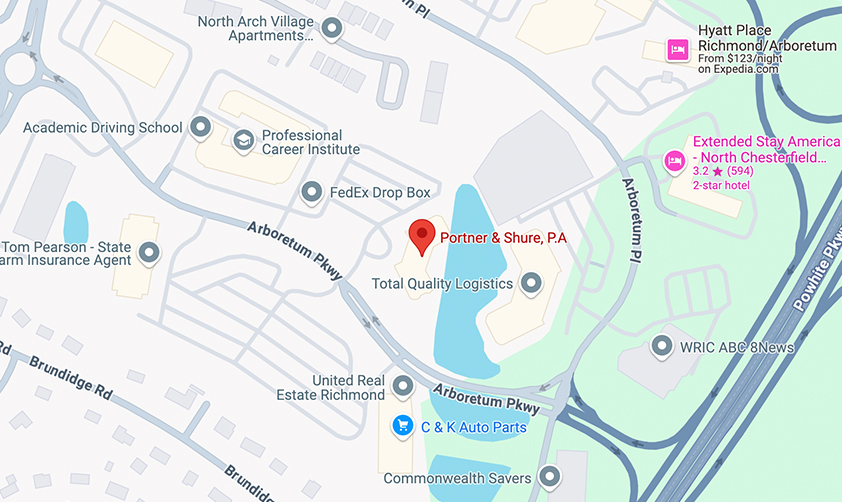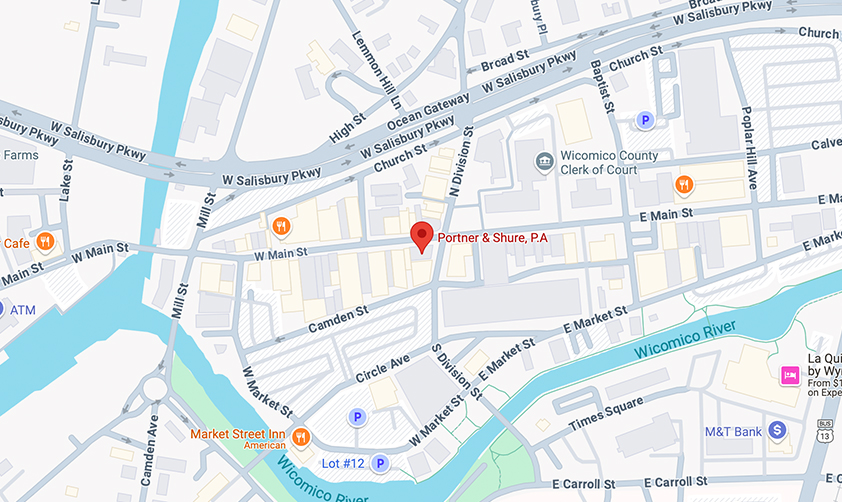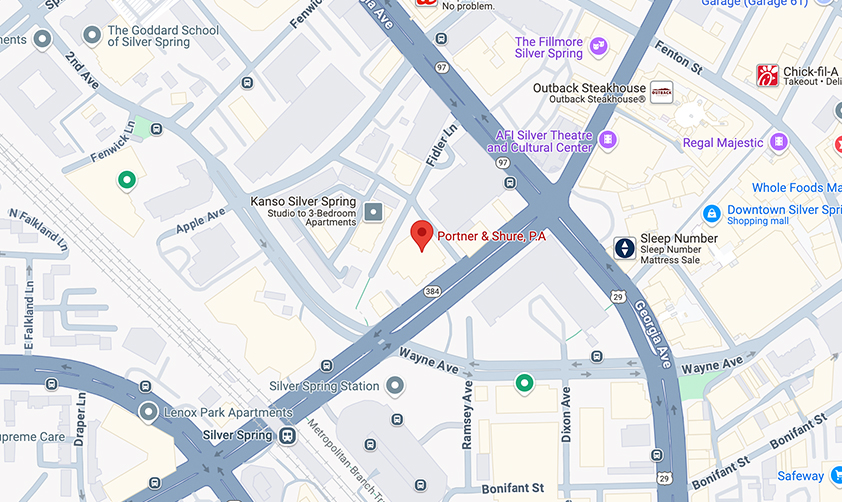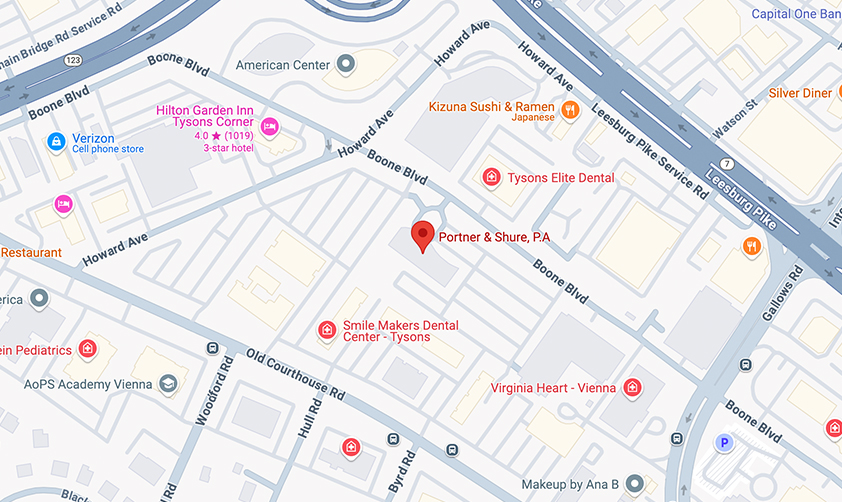Available 24/7 Free Consultation
(410) 995-1515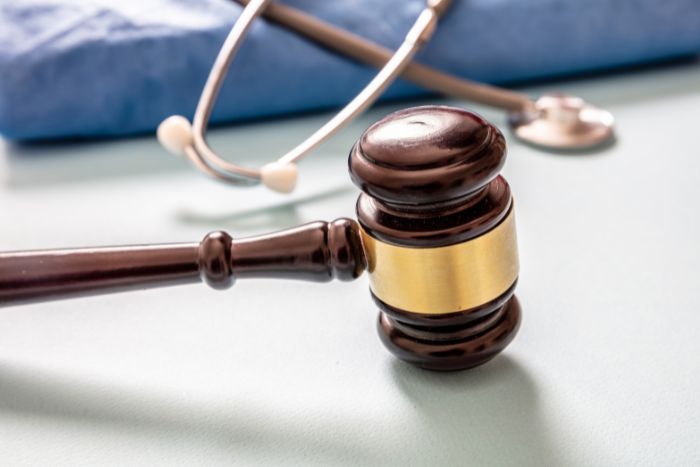
At the heart of every personal injury case is the legal concept of negligence. Negligence occurs when someone fails to meet a reasonable standard of care, whether it’s a driver ignoring traffic laws, a business overlooking safety hazards, or a corporation disregarding known risks. When that failure results in harm to another person, the negligent party can be held legally responsible. This standard of care is what ensures accountability in everyday life. In personal injury claims, proving negligence is the key to obtaining fair compensation for medical costs, lost wages, and the personal impact of an injury. Without establishing negligence, there can be no successful claim.
After an accident, seeking justice isn’t only about covering bills; it’s also about holding wrongdoers accountable so their actions don’t continue to put others at risk. That’s why working with knowledgeable personal injury attorneys is essential. At Portner & Shure, P.A., our team has decades of experience building strong claims rooted in clear proof of negligence. If you or a loved one has been harmed by someone else’s careless actions, contact Portner & Shure, P.A. today to pursue the compensation you deserve.
One of the foundational steps in any personal injury claim is establishing the duty of care, a legal responsibility requiring individuals, businesses, or organizations to act with reasonable caution to avoid causing harm to others. This concept applies in a wide range of situations, from motorists following traffic laws to property owners maintaining safe premises. Without proof that the defendant owed this duty, a personal injury claim cannot proceed, as the law demands that a relationship and foreseeable risk of harm exist before liability can be assigned.
To prove the presence of a duty of care, a personal injury attorney must demonstrate these key elements:
Proving this element makes it clear whether the defendant had a legal responsibility they failed to uphold, linking directly to the broader principle of negligence and the path to justice for an injured party.
Once the duty of care is established, the next step in a personal injury claim is proving a breach of duty. A breach occurs when someone acts carelessly, recklessly, or neglects established safety rules, like running a red light, failing to clean up a hazard, or not following workplace safety standards. Demonstrating a breach of duty is essential, as it links the defendant’s specific behaviors to the failure that resulted in injury.
Key points in proving breach of duty include:
Attorneys play a crucial role by collecting evidence, consulting experts, and clearly illustrating how the defendant’s conduct strayed from what was reasonable and expected. Proving a breach of duty often determines whether or not a negligence claim will prevail. Without this element, the case cannot move forward, and the opportunity for justice and fair compensation may be lost.
Causation is the bridge between a defendant’s breach of duty and the injuries suffered by the plaintiff in a personal injury case. Legally, causation means demonstrating that the defendant’s conduct was not only a contributing factor but the direct reason for the harm.
There are two main types: actual causation (“cause-in-fact”), where the injury would not have occurred but for the defendant’s actions, and proximate causation (“legal cause”), which examines whether the resulting harm was a foreseeable consequence of that conduct. Without this clear connection, even reckless or negligent behavior on its own isn’t enough to establish liability.
Key points for proving causation include:
The importance of causation can’t be overstated. Without strong evidence tying the defendant’s conduct directly to your injuries, a claim will fail regardless of how negligent their behavior seemed. That’s why it’s crucial to gather evidence immediately after an injury occurs. Photos, medical documentation, and witness accounts preserve details that might otherwise be lost. An experienced personal injury attorney will help you collect and analyze this vital information, working with experts to investigate your claim and build the strongest possible case.
Proximate cause refers to whether the harm suffered in a personal injury claim was a foreseeable result of the defendant’s actions, meaning the consequences of the behavior were predictable or reasonably anticipated. While actual causation (cause-in-fact) asks if the injury would have happened “but for” the defendant’s conduct, proximate cause digs deeper. This limits legal responsibility to only those harms that are closely tied to negligence and not caused by some unexpected or remote factor. Courts look at whether the defendant could have foreseen the risk of harm when evaluating whether they should be held liable for the injury.
Key points for proximate cause and foreseeability:
Foreseeability of harm shapes not just your right to compensation, but who can be held accountable. If the link between negligence and injury is too remote, recovery may be denied. That’s why working with a skilled attorney matters; they know how to demonstrate the causal chain and foreseeability, ensuring your case targets those who truly bear responsibility and maximizing your chance of a successful, properly valued personal injury claim.
In personal injury cases, damages refer to the monetary compensation awarded to the injured party for losses suffered due to someone else’s negligence. Properly evaluating these damages is crucial to ensure that you are fully compensated, not just for immediate expenses but also for ongoing and future costs related to your injury.
Key points about damages in personal injury claims include:
Securing full compensation is vital not only to recover medical costs but also to support any necessary long-term rehabilitation, therapy, or adjustments required due to prolonged or permanent injuries. A skilled personal injury attorney will carefully evaluate the scope of your losses and work to include every relevant damage in your claim, helping you obtain the financial resources needed to rebuild your life after injury.
A personal injury attorney and their legal team play a crucial role in guiding you through the complex process of proving negligence in your claim. From investigating the accident to gathering evidence, they build the foundation needed to establish the key elements of negligence: duty, breach, causation, and damages. The value of your claim often hinges on the thoroughness of your evidence and the skill with which negligence is proven. They understand the legal standards and know how to counter tactics that insurers might use to minimize payouts. Without legal help, you risk accepting a low settlement or missing vital deadlines that could jeopardize your claim.
Understanding the key elements of a personal injury claim is essential when pursuing compensation for injuries you or your loved ones have suffered. Each element builds on the other, creating a strong framework to demonstrate how someone’s negligence impacted your life. Whether it’s showing the responsible party had a legal duty, proving they acted unreasonably, linking their actions directly to your injury, establishing that the injury was foreseeable, or comprehensively documenting all your losses, these components work together to shape the outcome of your claim.
At Portner & Shure, P.A., the legal team’s experience lies in carefully navigating these elements, gathering detailed evidence, and advocating for fair compensation that reflects the true impact of your injuries. Contact Portner & Shure, P.A. to begin a focused approach toward securing the support and financial recovery necessary for your next chapter.


Expect More with
Portner & Shure
The legal system can be intimidating, but you deserve more. Expect more guidance, more dedication, and more results from our experienced trial attorneys every step of the way.


